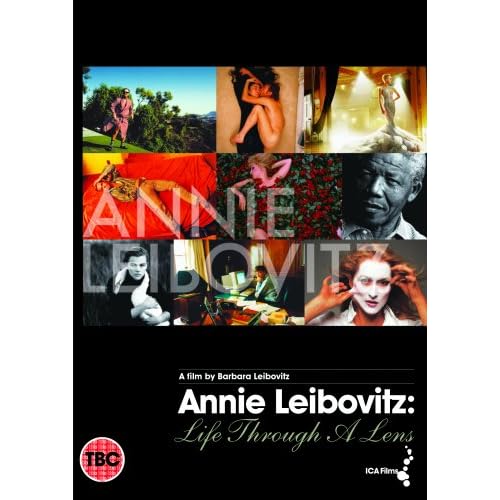Monday, 19 April 2010
Friday, 16 April 2010
Fashion Photoshoot: "Street Styles"
Sunday, 11 April 2010
Infrared Portraits
I took these last Summer at an open air festival of dance. They were part of a random experiment as I was still getting to grips with infrared photography, and I've only just processed them because I didn't know how to do that properly either! I will definitely do more of this type of work, particularly when the light is too harsh for colour photography.
Background Reading

I have been asked to photograph a wedding in the Summer, so this is one of a few wedding photography books that I bought from Amazon. I have to say, this book is an absolute Godsend!
I have declined requests to take wedding photos up until now, because I always think of this type of photography as dull and restrictive from a creative point of view.
However, this book shows a fresh approach to wedding photography, it's loaded with tips and advice and all of the settings for the various shots. The pictures are imaginative and the quality is impressive. Many of the shots have won awards, which is not the least bit surprising.

I bought this book because the use of flash is my Achilles Heel! Most photographers advise us to get the flash off the camera, but if you are working in a venue such as a church, taking pictures 'on the fly', you haven't the luxury of setting up stands and umbrellas etc.
This book explains how to bounce flash properly, ie the angle as well as the direction. I also have a better understanding of using fill-flash outdoors and exactly when to use it and what to do with the diffuser that came with my flash.
I'm also thinking about incorporating duotones and tritones now that I have seen the effects of them.

I always attempt panoramic shots when presented with an appropriate landscape, but I have had some problems with distortion due to parallax error. This book is perhaps a little too technical for me, but certainly helped me to choose a suitable VR tripod head and stitching software that allows more manual control than Photoshop.
It includes some helpful case studies that walk you through the entire process from image capture, stitching, manipulation, and fine-tuning to output.
Saturday, 10 April 2010
Tuesday, 6 April 2010
"Irving Penn Portraits"
This is an exhibition at The National Portrait Gallery, that runs until 6 June. It documents his work from the late 40's the 2007 and there is a very definite change in style during that period. His earliest work features full-length shots of very famous sitters posing on old pieces of carpet and wedged in alcoves - it's quite bizarre.
He then made a transition to headshots which became more dynamic as time passed.
The quality of the images is outstanding and I found it personally enlightening to see what people like Rogers and Hammerstein actually looked like. It seems that anyone who was anyone, was photographed by Irving Penn!
He then made a transition to headshots which became more dynamic as time passed.
The quality of the images is outstanding and I found it personally enlightening to see what people like Rogers and Hammerstein actually looked like. It seems that anyone who was anyone, was photographed by Irving Penn!
Monday, 5 April 2010
Getting to grips with flash
I'm going to give this a try after reading some positive reviews:
http://www.abetterbouncecard.com/ Sunday, 4 April 2010
Saturday, 3 April 2010
The Genius of Photography
I decided to take a break from reading, and watch some DVDs instead.
The first episode: 'Fixing the Shadows' discusses the advent of photography and Daguerre's and Fox-Talbot's successes in preserving an image in 1839. It was interesting to see how the purpose of photography changed from formal studio portraits to informal snapshots mainly due to increased accessibility (and lower processing costs) provided by Eastman's Kodak cameras.
I was particularly struck by the complex set-ups required by Muybridge compared with the spontaneity of Lartigue's stop-motion photography.
The third episode: 'Right time, right place' is mainly about the decisive moment, and of course the work of Henri Cartier-Bresson. I'm not entirely convinced by some of the interpretations of his work, as I think there was a certain amount of luck involved - I believe this is true of all reportage-style photography as you cannot control every aspect of the composition.
The sixth and final episode: 'Snap Judgements' discusses photo manipulation. I was amused to learn about Camille Silvy who added elements like clouds and leaves on trees to an image as far back as 1858! It got me thinking that there is a good proportion of 'manipulation' in the vast majority of images we see. Isn't the use of artificial lighting and backdrops a form of manipulation? The use of fisheye, macro and zoom lenses can give a warped perspective of reality at times too.
Eureka! We have come full circle, right back to the purpose of a photograph.
Friday, 2 April 2010
Annie Leibovitz ~ Life Through a Lens

I just watched this on DVD. I've been an admirer of Annie Leibovitz's work for several years because it's so different and quite daring. This film is really about the person rather than the images, though there are insights into the stories behind some of her most famous work.
It was interesting to see the amount pre-planning, setting-up, post-processing (and money!) that goes into shooting a cover for Vanity Fair or Vogue.
She made an interesting comment relating to Vanity Fair that her 'real' pictures were inside the magazine, since the cover was designed to sell the publication and was therefore just an advert. The 'real' photographs were more candid and had more of a documentary/reportage feel to them. This reminded me of the first chapter of 'The Photograph' by Graham Clarke which looks at the purpose of a photograph.
Subscribe to:
Posts (Atom)


































